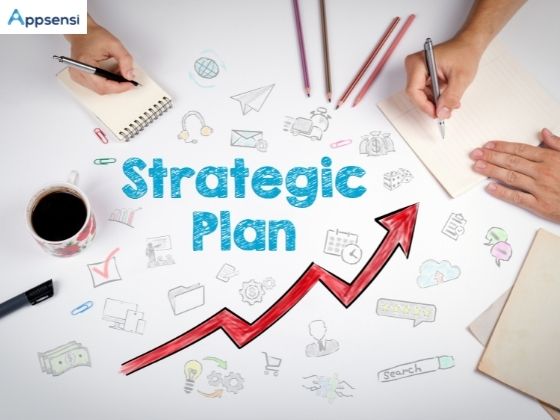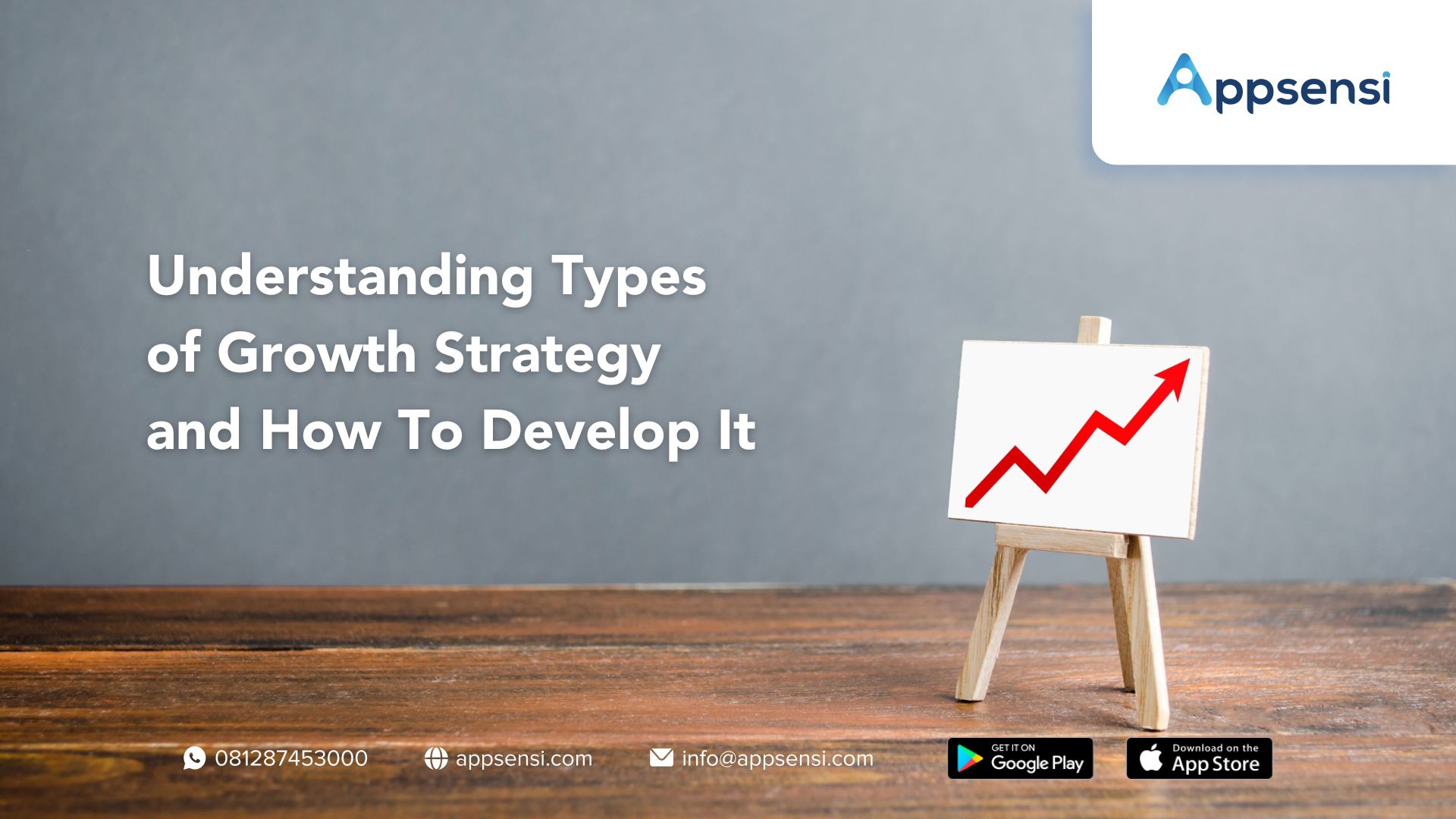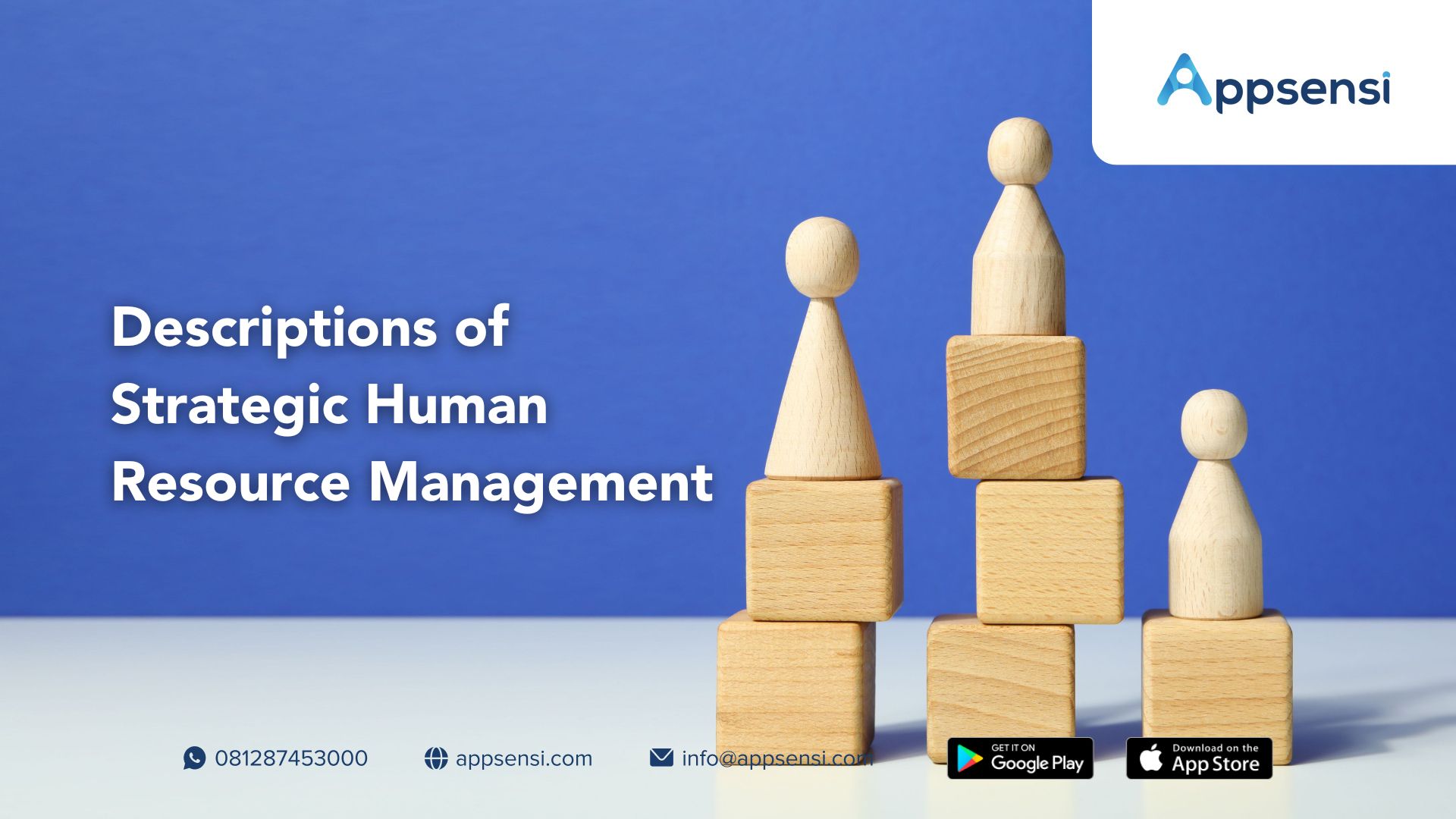All businesses have a vision or goals they want to achieve. With the achievement of its goals and objectives, a company can then call itself a successful company.
To create or list out your goals or objectives that you plan to achieve in a certain period in the future, or to create an action plan on how you want to achieve these goals and objectives, every business needs a map to know where they are heading towards in the future. This map is created in a process called strategic planning.
So, what is strategic planning? Is it really necessary to be implemented in a business? Check this article out to learn more about strategic planning.

What is Strategic Planning?
A process of determining visions for the organization’s future, creating and implementing business strategies, and setting the focus of energy and resources to attain the organization’s goals is the definition of strategic planning.
Strategic planning creates a map for business which is crucial for the business to determine the business course. Strategic planning is a concept where various departments within a company are being integrated to accomplish its goals and objectives. These various departments may include accounting, finance, marketing, human resources, and any other part within a company that holds a role in the organization’s well-being.
Strategic Planning vs Strategic Management

The term strategic management is often misunderstood to have the same meaning as strategic planning.
As mentioned above, strategic planning is a step-by-step process to create a map for the organization to attain its goals. In the process of making strategic planning, individuals should be able to get information and offer their opinions or judgments on the impact or influence of this information may change the company’s future.
Strategic management or also called strategy execution is the implementation of the strategic plan or practices that ensure operations and resources allocation in a company is aligned with the strategic plan outline and the organization’s vision.
So as a conclusion, strategic planning is the process to create a map of the sequences of events that will help you to reach the organization’s vision, while strategic management is the implementation of plans stated in the strategic planning.
Companies use strategic planning to formulate and implement effective decisions to reach their goals efficiently. Strategic planning aims to analyze business and set realistic goals and objectives for a business.
Effective strategic planning will ensure your business’s future success. Developing strategic planning may help a company to ensure everyone in the organization is on the same page for achieving the organization’s goals and objectives.
Also read: What Is Strategic Management and Its Benefits
What are the Advantages of Strategic Planning?
As a business owner, strategic planning may benefit you with better ideas of goals and objectives, and also involve your employees to contribute to succeeding the business. More proactive preparation and a long-term view of issues that may threaten the firm can be studied with strategic planning.
Below we have described some of the advantages of strategic planning.
1. Helps Formulate Better Strategies
Strategic planning is meant to create realistic objectives for a company to attain by a logical and systematic approach from every part of the company. According to some studies, the strategic planning process helps a company in improving its overall performance significantly.
2. Set a Direction for Business and Individuals’ Empowerment
As we’ve mentioned above, strategic planning involves every part of a company, from executives, managers, even up to lower-level managers and employees. By doing so, a decentralized strategic planning process will help employees to strengthen their sense of effectiveness in work, accountability, responsibility, and importance in overall company success.
3. Analyze One’s Strengths and Weaknesses
SWOT analysis is one part of the strategic planning process, where a company will analyze its entire business, including its strengths and weaknesses. This process does not only involve executives and managers, but also the employees.
By indulging executives, managers, and employees in identifying the business’s strengths and weaknesses, companies are given a chance to improve their business and minimize the risks and threats that may endanger the business in the future.
4. Strengthen communication between Employers and Employees
One of the keys to success in a strategic planning process is communication. Participation and dialogues between employers and their employees show their commitment to achieving the organization’s goals. This also may show that they understand what the business is doing and that they’re on the same page.
Moreover, employees can share their unique view or opinions of the business, or even their creative ideas for achieving the company’s goals and objectives.
Strategic Planning Process
For strategic planning, most companies look three to five years ahead. A strategic planning process is not simple, as it requires substantial thought and arrangement that may yield many possible options. The company’s executives are required to decide on what kind of strategy is the most needed by the company.
The chosen strategy must be able to improve the company’s strength and growth, and also can be implemented cost-efficiently with a high possibility of success and low risk of financial disruption.
Strategic Planning Committee
The strategic planning process is generally led by a strategic planning committee, as the professional of the strategic planning discipline. This committee must include representatives from all areas within the organization.
To grasp the company’s current status and factors that may impact the company’s future, the strategic planning committee conducted research for information and things needed. Input and feedback are required for the committee to be able to validate or provocate the information. Strategic planning committees should work openly and transparently, plus the information they gathered from the beginning to the end of the process must be documented.
The strategic planning process consists of three main phases, including the discussion phase, the development phase, and the review and updating phase.
1. Discussion Phase
The discussion phase is a phase where strategy is being formulated. This phase of strategic planning involves the gathering of information, opinions, and input from scheduled meetings with employees and staff in a business who are involved in strategic planning. To keep discussions on track and prevent distractions, companies have to make an agenda and clear expectations of the meeting.
The discussion phase is not only limited to having meetings with employees and staff, but companies can also gather information from external people, such as vendors, investors, and analysts. People outside your company might have a different perspective on your business, and their opinions about where they think the industry is evolving and what kind of changes they think might happen in the future may help companies to set a good plan.
During the discussion phase, companies can also conduct a SWOT analysis, which stands for Strengths, Weaknesses, Opportunities, and Threats. To identify the company’s SWOT, you can perform an internal and external audit to evaluate its situation at the moment.

Strengths
Identifying the organization’s strengths means a company can identify what its business does well.
Weaknesses
Every business has its weaknesses or a place in its business that it can improve in the future with a detailed strategic plan.
Opportunities
Businesses should also analyze future opportunities that may help facilitate business growth and success, may it be internal or external opportunities.
Threats
Threats, such as competitors or external factors may prevent a business’ growth and success. Having external people’s opinions on our business may help businesses to know the direction of their business and any major competitors or challenges from the outside. Identifying threats firsthand puts a business in a better position to address these threats if and when they encounter these threats.
2. Development Phase
After gathering up all of the information needed, the company then put together its strategic plan for the business in the next phase, which is the development phase.
There are five key components of a strategic plan, such as vision statement, mission statement, objectives and goals, action plan, and details on how often the strategic plan will be reviewed and updated.
In this step, you and your employees should state an objective vision, mission, objectives, and goals for your company. Moreover, these objectives must be measurable and realistic, or achievable. Managers and their employees should first discuss what kind of equipment they will use to create the strategic plan, will they need software to help them, and what kind of item will they use to measure and track the goals they have made.
An action plan is needed for a company to successfully achieve those objectives and goals. But it is fine for a company to rewrite its action plan if it does not help them in achieving its goals.
3. Review and Updating Phase
Someone in the company must be designated to be responsible for this step. Reviewing, updating, and sharing the changes that are happening is a necessary part of the strategic planning process.
Checking the strategic plan regularly will help companies to make sure that they are on the right track to achieving their goals. A recurring alert may help as a reminder for you to review and update the plan.
If in this reviewing phase you’ve found out that the plan you’ve carried out is not on track to meet the objectives and goals you’ve set up previously, you might need to discuss and figure out the issues with your employees. This may happen if the goals or objectives are too unrealistic. The company might need to change the objectives and goals, then update its action plan to bring them back on track.
It is also possible in this phase for businesses to find that they’ve achieved a goal or an objective earlier than the time they planned out in the action plan. Thus, the company may discuss ideas on a new goal or objective to work toward, or you may also maintain the progress you’ve made.
Also read: Understanding Corporate Strategy, How Important Is It?
Strategic Plan
A strategic plan is the result of a strategic planning process is a document filed with the decisions regarding your organization’s objectives, and the ways that you need to implement to achieve them. Moreover, a strategic plan should consist of your company’s mission, vision, values, long-term goals, and action plans.

This strategic plan then becomes the guide for the company’s leader to help their decision-making moving forward, and help in improving business growth and success. The strategic plan may vary according to the type of your business. Examples of different strategic plans may include:
1. Strategic Plans for Business
The strategic plan for a business is not the same as a business plan. To start a business and obtain the necessary funds, a company will need a business plan. Meanwhile, a strategic plan for business outlines the strategy of using existing resources to plan a business’s growth and success in the future.
2. Strategic Plans for Nonprofits
Nonprofits’ strategic plan components for 2010 through 2014 are outlined by the Minnesota Council of Nonprofits, which consists of the company’s vision, mission, served community, and goals for a period of four-year.
Nonprofit organizations will lay out a strategic plan which focuses more on the possibilities of upcoming threats or challenges from internal and external factors. The strategic plan for nonprofits should also take into consideration how nonprofit companies’ structures can change rapidly.
3. Strategic Plans for IT
IT strategic plans often look at the next year to a year and a half and they may also be reviewed more frequently than other businesses, as the IT industry changes so often over time. IT strategic planning must be able to identify these changes in the future as well as possible, so IT businesses will put themselves in a better position to bear any potential issues that may arise in the future.
In a strategic planning process for an IT industry, it will be best for the industry to involve its business’s Chief Information Officer, who has the knowledge and skills needed in putting together a strategic plan for the tech business.
4. Strategic Plans for Marketing
A marketing strategic plan aims to generate sales for the business and helps businesses to generate more revenue and customer base. It is necessary to add a budget to a strategic plan because this strategic plan aims to increase the business’s exposure and numbers and work toward the marketing goals. By including the budget within the plan, employers and employees may avoid losing too much money.
Marketing technology, software, web-based platforms, or even a specific type of marketing being pursued can be included in marketing strategic planning to help track the business’s progress towards its goals.
Also read: Market Research 101: The Ultimate Guide for Your Business
A Successful Strategic Planning
There are several criteria a business must meet to conduct successful strategic planning, such as:
1. Commitment
As mentioned above, a good strategic planning process involves your entire company. This plan needs to be carried out by every part of the company, including executives, higher and lower-level managers, and employees. Strategic planning is an ongoing commitment, starting from the plan initiation, development, even up to the plan implementation.
2. Leadership and Team Effort
Strategic planning can not be done by only the executives of one company, but it needs the entire company to carry out this strategic plan so it can be successful. Every department must focus on the business and use this strategic plan as the foundation of business so they may not lose sight of the company’s vision. It is one of the leaders’ roles to maintain their employees to stay on track with the company’s vision.
Besides all the people inside the company, strategic planning also needs a team effort with people outside the company. They will understand better about the strategy you want to have and the goals you want to reach by engaging more deeply with the strategic planning.
3. Flexibility
As business environments keep changing over time, a good strategic plan needs to be flexible. Companies have to be able to adapt to changes, so they won’t get left behind by these changes.
For example, in this pandemic era companies are demanded to be able to adapt to the new normal challenges, one of which is the option to work online or remotely from home (Work From Home). Thus, the attendance system using fingerprint machines needs to be replaced with an online attendance system. Appsensi is a mobile application that provides an online attendance system for companies, featured with facial recognition and location markers (GPS). Appsensi is used by BNPB (Badan Nasional Penanggulangan Bencana) and many other companies to reduce the potential of Coronavirus transmission in the office environment.
4. Realistic Goals and Objectives
Setting unrealistic goals and objectives into your action plan may discourage you and your employees. An overly ambitious growth rate may prevent your company from growing and succeeding as the goals and objectives are unrealistic and unachievable.
Also read: Learn the Steps to Achieve Your Company Goals Here!
Develop your Strategic Plan with Appsensi
In the strategic planning process, knowing one company’s strengths, weaknesses, opportunities, and threats are necessary. By doing a SWOT analysis, you can gather lots of information about your business and also know where your business is heading.
Gathering information is one of the most important parts of SWOT analysis. These days, SWOT analysis is made easier with technology.
Appsensi is an application that offers a mobile-based attendance system and online payroll. Not only do they give valid attendance data, but Appsensi also helps companies in collecting internal data that may help the company’s SWOT analysis. These internal data may also show employees’ behaviors and performance at work. So what are you waiting for? Let’s launch your company’s perfect strategic plan, and improve your business’ growth and success with Appsensi.








Tulis Komentar